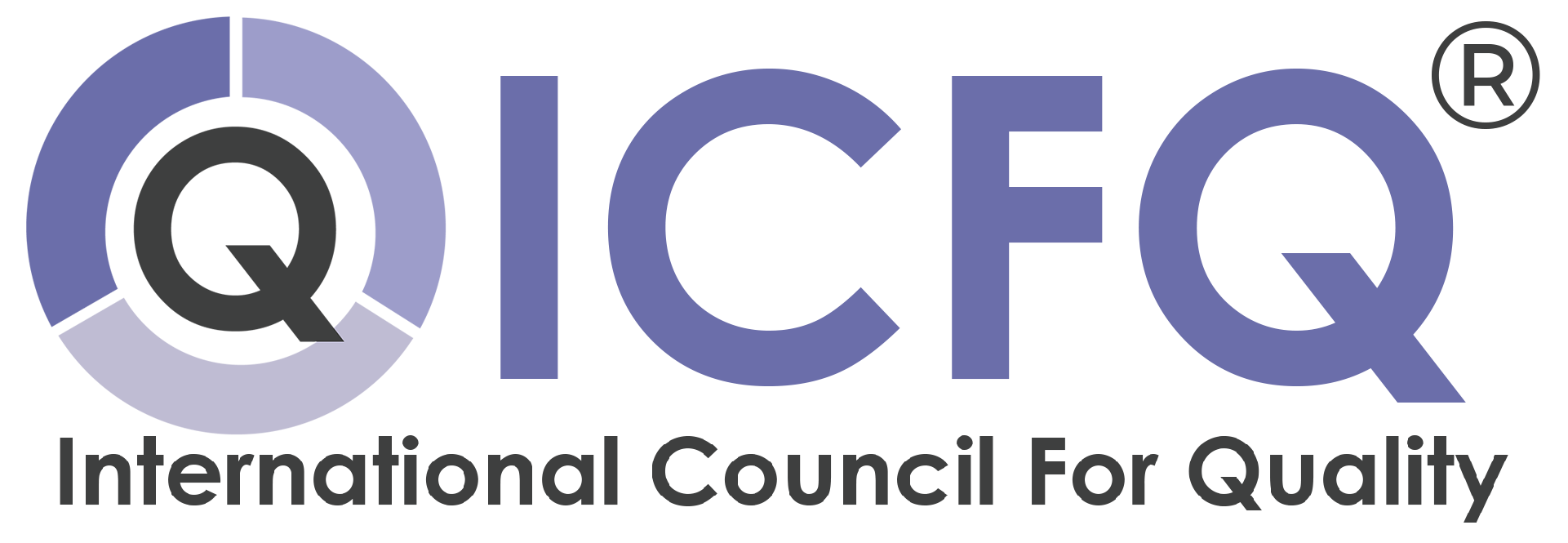Six Sigma Certification
Six Sigma Certification for Every Career Stage
At ICFQ ®, our Six Sigma Certification is designed to cater to individuals at every stage of their career journey. Whether you're just starting and seeking foundational knowledge in quality management and process improvement, or you're a seasoned professional aiming to enhance your skills and advance your career, we have a certification program to suit your needs.
Our comprehensive certification programs cover key concepts, methodologies, and tools of Six Sigma, a proven methodology for achieving operational excellence and driving continuous improvement. With a focus on data-driven decision-making, statistical analysis, and process optimization, our certifications empower individuals to identify and eliminate defects, reduce variation, and enhance overall efficiency and effectiveness within their organisations.
What is SIX SIGMA?
Six Sigma is a methodology that focuses on improving the quality and efficiency of processes within an organization. It aims to reduce defects and errors by using statistical analysis and data-driven approaches. By implementing Six Sigma, companies can achieve higher levels of customer satisfaction, increased productivity, and cost savings. This approach involves defining, measuring, analyzing, improving, and controlling processes to ensure consistent and reliable results. Six Sigma has become a widely adopted framework in various industries, helping businesses achieve operational excellence and drive continuous improvement.
Certifications:
-
Green Belt Certification:
Our Green Belt Certification program is designed for individuals who seek to lead small-scale improvement projects within their organizations. Green Belts are equipped with foundational knowledge of Six Sigma methodologies and tools, enabling them to drive measurable improvements in processes and outcomes.
-
Yellow Belt Certification:
Ideal for individuals new to Six Sigma, our Yellow Belt Certification program provides an introduction to basic concepts and terminology. Yellow Belts play a crucial role in supporting improvement projects led by Green and Black Belts, contributing to the overall success of quality initiatives within their teams.
-
Black Belt Certification:
Black Belt Certification is the next level of proficiency in Six Sigma, catering to professionals who aspire to lead complex improvement initiatives and mentor Green Belts within their organizations. Black Belts undergo rigorous training in statistical analysis, project management, and leadership, preparing them to deliver a significant impact on organizational performance.
-
Master Black Belt Certification:
Master Black Belt Certification represents the pinnacle of expertise in Six Sigma. Reserved for seasoned professionals with extensive experience and a track record of success, Master Black Belts serve as mentors, coaches, and strategic leaders within their organizations. They play a pivotal role in shaping organizational Six Sigma strategy and driving continuous improvement at all levels
Why Choose ICFQ ® for Six Sigma Certification?
- Industry Recognition: ICFQ ® is a globally recognized authority in quality management. Our certifications are respected by industry professionals and organizations worldwide, providing a competitive edge in the job market.
- Expert Guidance: Our certification programs are developed and delivered by experienced practitioners and subject matter experts with industry knowledge and practical experience.
- Comprehensive Curriculum: Our courses are meticulously designed through thorough research and insights derived from industry best practices, ensuring that participants gain practical skills and knowledge immediately applicable to their roles.
- Flexible Learning Options: Whether you prefer in-person workshops, online courses, or self-paced study, we offer flexible learning options to accommodate your schedule and learning preferences.
- Community Engagement: Join a vibrant community of Lean Six Sigma professionals and enthusiasts, and engage in knowledge sharing, networking, and continuous learning opportunities
- Mission-Driven Approach: At ICFQ ®, we are committed to advancing the Lean Six Sigma profession by setting standards of excellence and recognizing professionally qualified individuals and organizations.
Get Started with ICFQ ® Six Sigma Certification Today:
Ready to take the next step in your Lean Six Sigma journey? Explore our certification programs and choose the one that best aligns with your goals and aspirations. Join the ranks of certified professionals who are driving organisational excellence, delivering superior quality, and achieving sustainable results.
With ICFQ ®, you'll gain the knowledge, skills, and recognition you need to excel in quality management, advance your career, and positively impact your organization. Enrol in an ICFQ ® Six Sigma Certification program today and embark on a path towards professional growth, organizational success, and a commitment to excellence in quality management.
FAQs for Six Sigma and Six Sigma Certification
Six Sigma is a methodology aimed at improving the quality and efficiency of processes within organizations. It focuses on reducing defects and errors by using statistical analysis and data-driven approaches.
Six Sigma helps organizations achieve higher levels of customer satisfaction, increased productivity, and cost savings by improving processes and reducing variation.
To get started with Six Sigma Certification at ICFQ®, explore our certification programs and choose the one that aligns with your goals. Enroll today to gain the knowledge, skills, and recognition needed for success in quality management and process improvement.
Six Sigma Certification is available at various levels, including Green Belt, Yellow Belt, Black Belt, and Master Black Belt, each representing different levels of proficiency and responsibility.
Green Belt Certification is for leading small-scale improvement projects, Yellow Belt Certification provides an introduction to Six Sigma concepts, Black Belt Certification is for leading complex improvement initiatives, and Master Black Belt Certification represents the highest level of expertise in Six Sigma.
Understanding of Data , ICFQ® offers globally recognized certification programs developed and delivered by experienced practitioners and subject matter experts. Our comprehensive curriculum, flexible learning options, and vibrant community engagement ensure a rewarding learning experience.
